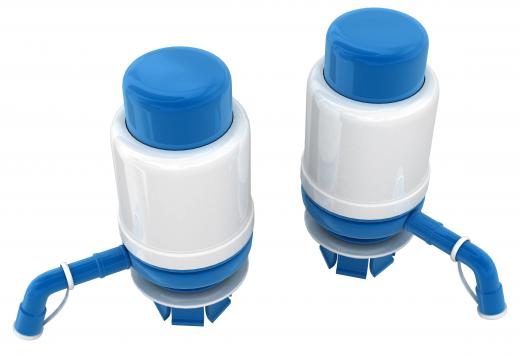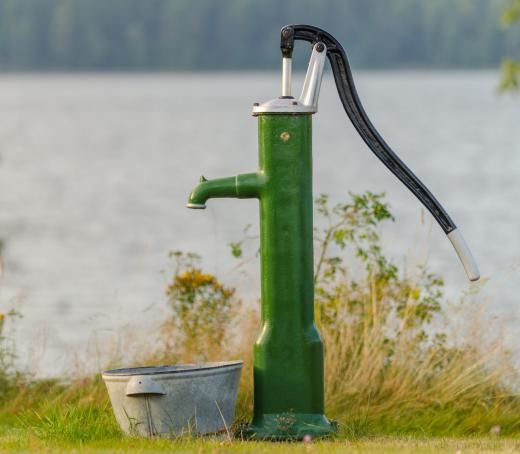There are many types of water pumps, each serving a special purpose in a home or business. All of them, however, are responsible for moving water in one way or another.
Well pumps help push water from underground water sources through pipes leading to a home or business. Well water pumps come with various amounts of horsepower. The size of the home and the number of bathrooms and sinks it contains are important consideration when deciding which well pump to purchase. If a home has many water outlets, or if the well water pump is located a great distance from the bathroom, sink, or tub, the home will need a stronger well. In addition, well pumps supplying water to more than one home will need to have more horsepower.

Well water pumps contain a motor, which spins a blade. This blade creates suction and draws the water into the pipes. It then pushes the water through the pipes and into the building. From there, a pressure tank helps distribute the water to all areas of the home or business.
Pressure tanks are also water pumps. Pressure tanks help regulate the pressure of the water as it comes into a home. Seasonal changes can alter the pressure of the water, such as when it is increased by snow melting in the spring. A water pressure tank helps keep the water flow steady year round.

Sump pumps are also water pumps. Many home and business owners battle basement seepage issues. With excessive rain, flooding, or melting snow, water can become a troublesome nuisance as it collects indoors. The best way to remove water from a basement is with a sump pump.
Similar to well pumps, sump pumps have a blade that is spun by a motor. Sump pumps are usually installed in the wettest part of the basement by first inserting a sump bucket into the floor. This bucket sits below the floor level as water flows into it. The sump pump's motor turns on when the float inside the sump pump is triggered by the water level. The motor spins the blade, which pushes the water up the drain hose and out of the building or house.

There are two different types of sump pumps. A submersible sump pump can be placed below the water line. A floor model sump pump, on the other hand, sits at floor level. Both water pumps work in the same manner, but submersible sump pumps handle larger quantities of water and can be fully submerged without any danger of electrical shortages.
